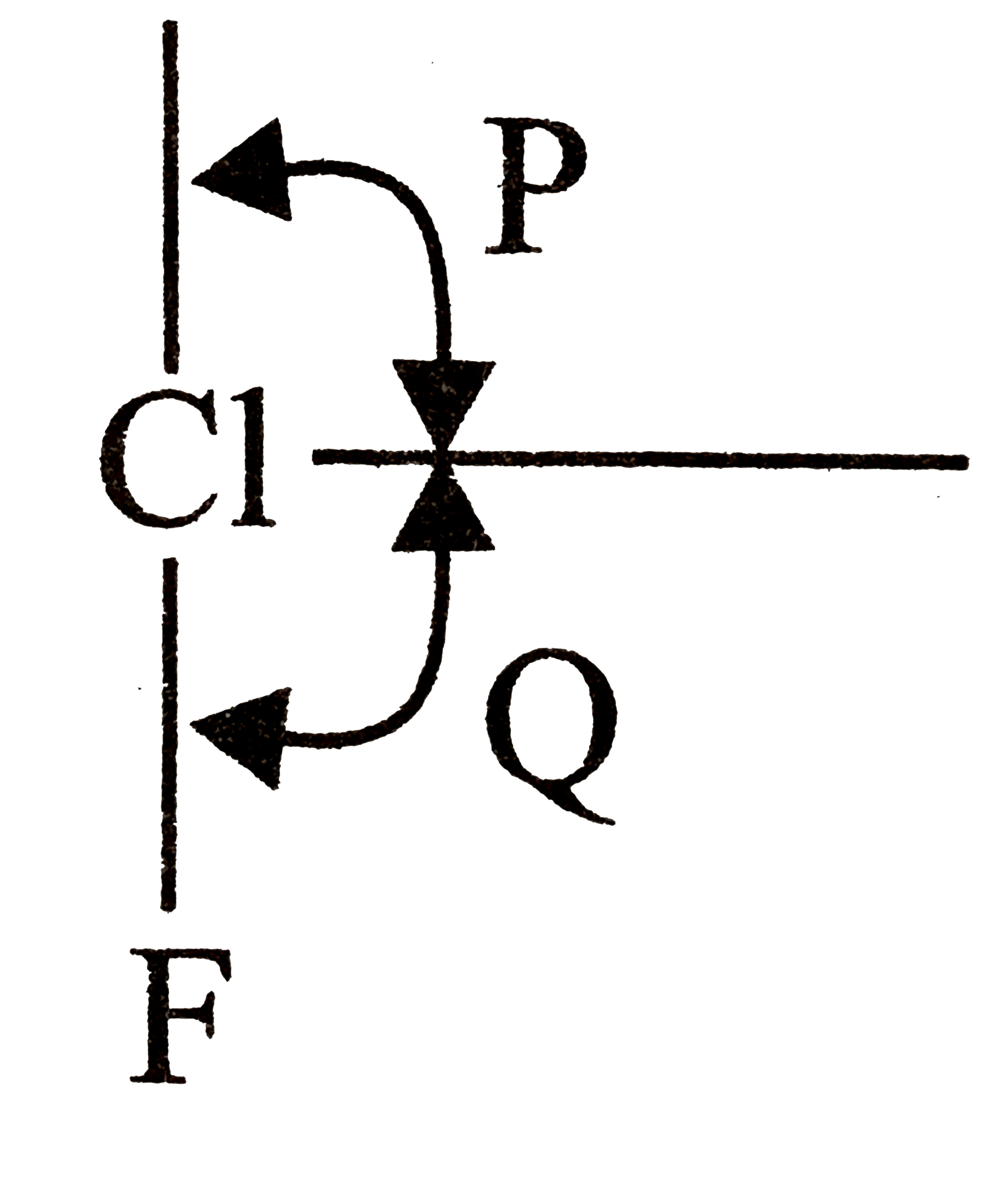Assertion : All F - S - F angle in SF4 are greater than 90∘ but less than 180∘.
Reason :The lone pair -bond pair repulsion is weaker than bond pair -bond pair repulsion
If both assertion and reason are true and reason is the explaination of assertion.
If both assertion and reason are true but reason is not the correct explaination of assertion
If assertion is true but reason is false
If both assertion and reason are false.
The correct Answer is:C
To solve the given assertion and reason question, we need to analyze both statements carefully.
Step 1: Analyze the Assertion
The assertion states that "All F - S - F angles in SF4 are greater than 90° but less than 180°."
- Structure of SF4: Sulfur tetrafluoride (SF4) has a seesaw molecular geometry due to the presence of one lone pair of electrons on the sulfur atom.
- Bond Angles: In SF4, the F-S-F bond angles are not uniform. The axial F-S-F bond angles are approximately 180°, while the equatorial F-S-F bond angles are around 102° and 89°.
- Conclusion for Assertion: Since not all angles are greater than 90° (specifically, one angle is 89°), the assertion is false.
Step 2: Analyze the Reason
The reason states that "The lone pair-bond pair repulsion is weaker than bond pair-bond pair repulsion."
- VSEPR Theory: According to the Valence Shell Electron Pair Repulsion (VSEPR) theory, the repulsion between lone pairs is greater than the repulsion between bond pairs. Therefore, the repulsion between a lone pair and a bond pair is indeed weaker than that between two bond pairs.
- Conclusion for Reason: The statement is false because the lone pair-bond pair repulsion is stronger than bond pair-bond pair repulsion.
Final Conclusion
Both the assertion and the reason are false. Therefore, the correct answer is option D: Both assertion and reason are false.
---
The assertion states that "All F - S - F angles in SF4 are greater than 90° but less than 180°."
- Bond Angles: In SF4, the F-S-F bond angles are not uniform. The axial F-S-F bond angles are approximately 180°, while the equatorial F-S-F bond angles are around 102° and 89°.
- Conclusion for Assertion: Since not all angles are greater than 90° (specifically, one angle is 89°), the assertion is false.
The reason states that "The lone pair-bond pair repulsion is weaker than bond pair-bond pair repulsion."
- Conclusion for Reason: The statement is false because the lone pair-bond pair repulsion is stronger than bond pair-bond pair repulsion.
Both the assertion and the reason are false. Therefore, the correct answer is option D: Both assertion and reason are false.
Similar Questions
Knowledge Check
Assertion :- The observed bond angle in NH3 molecule is less than 109∘28'.
Reason :-In ammonia molecule, the bond pair-bond pair repulsion is more than the lone pair-bond pair repulsionAIf both Assertion and Reason are CORRECT and Reason is the CORRECT explanation of the AssertionBIf both Assertion and Reason are CORRECT but Reason is not the CORRECT explanation of the Assertion.CIf Assertion is CORRECT but Reason is INCORRECT.DIf Assertion is INCORRECT but Reason is CORRECT.
Assertion (A): CIF is more reactive than F2.
Reason (R ): The F-F bons is weaker than CIF bond.
View SolutionThe number of near about 90∘ angles between bond pair - bond pair of electrons in BrF5 is :
View SolutionAssertion : bond angle H2O is less than the normal tetrahedral bond angle.
Reason : Lone pair-lone pair repulsion decreases bond angle.
View SolutionAssertion (A) : P4 is more reactive than N2
Reason (R) : P−P bonds are relatively weaker than N≡N
View SolutionThe maximum number of 90∘ angles between bond pair-bond pair of electrons is observed in
View SolutionAssertion (A): Sodium metal is softer than potassium metal.
Reason (R ): Metallic bond in potassium is weaker than in sodium.
View SolutionIn NO−3 ion, the number of bond pair and lone pair of electrons on nitrogen atom are:
View Solution

 F bond angle p is equal to the bond angle Q but not precisely equal to
F bond angle p is equal to the bond angle Q but not precisely equal to